Page History: Invoice Help Documentation Part 1
Compare Page Revisions
Page Revision: 07/12/2012 02:29 PM
Invoices
This task is used to:
- Create one-step invoices for customers.
- Print an invoice from a converted Work Order, Invoice Shipments, or Quote.
- Inquire into open invoices to make changes, void, and/or print.
- Inquire into released (posted) invoice history.
Select
Invoices from the
Navigation Bar or from the Drop Down Menu
Order Entry – Billing.

Invoice Screen
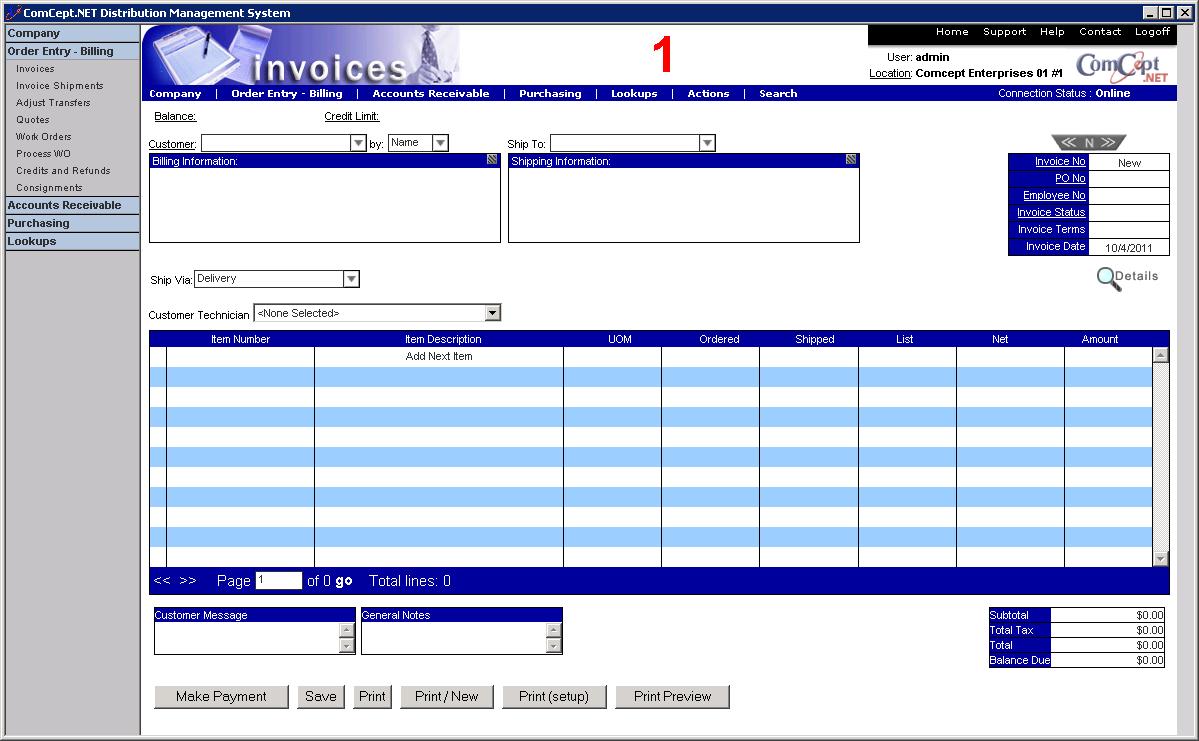
This is the
Invoices screen. It is important the
User and the
Location are correct because multiple users and locations can be accessed from the same computer. These are located in the top right area of the screen.
The Invoice screen is made up of six areas:
- Customer billing, shipping and credit information.
- Invoice information, search, and control.
- Item billing and pricing.
- Customer messages and notes boxes.
- Invoice tax and totals boxes.
- Invoice Actions Icons.
- Customer billing, shipping, and credit information:

- Invoice Information, search, and control:
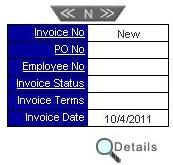
- Item Billing and Pricing:

- Customer Messages and Notes Boxes:

- Invoice Taxes and Totals Boxes:


Note: The following sections are in the same order that the
(Tab) key follows during date entry.
Customer Billing, Shipping, and Credit Information¶
Bill To Customer
The bill to and ship to customer fields are in the customer billing, shipping, and credit information area:

Select the desired Bill To customer using the two drop down boxes
Customer: and
by:
In the Customer field:
- Begin typing the customer’s name.
- Then press (Tab) to select name or select with the mouse.
- Or by selecting the drop arrow and scrolling through the names.
- Then press (Tab) to select name or select with the mouse.
- Or by changing the by dropdown and searching based on the selection.
After the Bill To customer has been selected the customer
Balance and
Credit Limit is displayed along with the customer name, and address. Also, any
Customer Messages setup in the customer record are displayed in a pop up window.
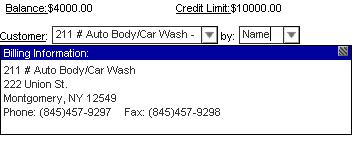
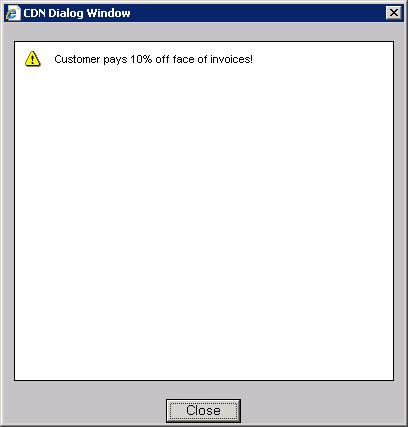
Select the
Address update button on the far right of the
Billing Information heading line to open the
Custom Details window. Changes made in this window are not permanent and will print on this invoice only.
Below is an image with the button circled.
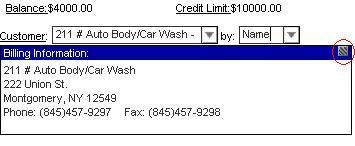

Customer Search By Box
The second drop down box is used to specify the valued to be searched for in the Customer drop down box (please see above).
Customer Number: The customer number field from the Customer Information screen. This usually contains the old customer number from a conversion.
Customer Phone: The customer phone number
Description: The customer description
Name: The customer name.
Short: The customer short name.
Ship To Customer
After the Bill To customer has been selected, the Ship To customer may be selected from the
Ship To: drop down box. This box will only display valid Ship To customers for the Bill To customer selected (established by the
Parent Customer assignment in the
Customer screen). The valid Ship To customers are displayed by customer name with the
Customer Number appended on the end.
Open the
Ship To drop down box by pressing the down arrow when in the
Ship To field or select the
down button at the left end of the Ship To field. Select the highlighted Ship To customer using the (Tab) key or the mouse.
This shows the Bill To and Ship To customers selected.

Select the
Address Update button on the far right of the
Shipping Information heading line to open the
Shipping Details window. Changes made in this window are not permanent and will print on this invoice only.
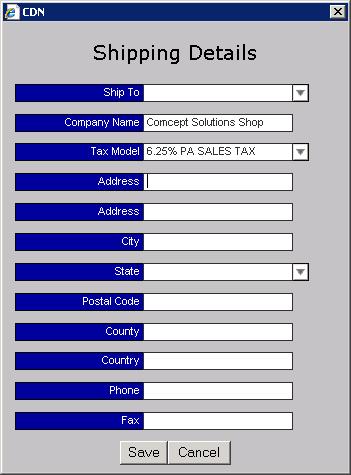
Invoice Information, Search, and Control¶
Invoice Control Bar

Next is the select previous invoice, new invoice, or next invoice buttons on the selection bar.
Invoice Number
This is the invoice number (i.e. 123456) assigned when the invoice is printed or saved. This field contains the word
New until the invoice is printed or saved the first time. An offline invoice number (i.e. 70-5-1) is temporarily assigned to invoices created when not connected to the Internet. After the connection to the Internet is made or restored, the offline invoice number is stored in the
Alternate ID field and then the permanent invoice number is assigned.
Purchase Order Number

The alphanumeric customer’s Purchase Order Number is entered in the
PO No field located in the Invoice Information area.
Employee Number
The alphanumeric employee number is entered in the
Employee NO field immediately below the
PO NO field (see above). The employee number must also be entered into the Employee Number dialog window each time an invoice is saved or printed. The employee number must be created using the Employees task before it can be used.
Ship Via
Select the desired
Ship Via from the
Ship Via drop down box located just below the Customer Billing Information area:
 Ship Via
Ship Via entries are maintained using the
Data Maintenance task in the Table
Shipping.

Technicians
A user can select which technician will be working on the invoice.
Header Details
Select the
Details button to open the invoice header details dialog window to change invoice header information if required. These changes will only affect this invoice.
 Sales Person:
Sales Person: Select a different sales person.
Pricing Profile: Select a different pricing profile.
Tax Model: Select a different tax model.
Terms Code: Select a different terms code. Use this to change a “Charge” invoice to a “Cash” invoice. This change must be saved before the next three display fields change.
Due Date: The due date as determined by the
Terms Code (display only).
Discount Date: The discount date as determined by the
Terms Code (display only).
Discount Offered: The discount amount as determined by the
Terms Code (display only).
Created By: The employee number used to create the original invoice (display only).
Last Modified By: The last employee number used to modify the invoice (change, print, save, etc.) (display only).
Bill Forward: Select this option to change the invoice date to the first day of next month (i.e. 5/1/2002).
Original Invoice Date: Select this option to use the current date as the invoice date (i.e. 4/17/2002).
OrderLinx No: Future use. Select the
Save button to record the changes or the
Cancel button to discard the changes.
Item Billing and Pricing¶
Item Billing
The item billing and pricing area of the invoice is where items are entered for billing the customer.

Select the desired item using either the
Item Number or the
Item Description columns.
Item Number Column:
 Item Description
Item Description Column:

Item search can use the wild character (%). This will allow the user to search for any part of the item name or description if typed into the correct column.
You can also use the down arrow to open the item or description drop down box and then scroll search for the desired item. But this is inefficient for item files with a large number of Items. Select the highlighted Item by pressing the (Tab) key or using the mouse.
Item Description
You can edit the Item Description and even add an extended description or comment if desired. Simply re-select the underlined Item Description to open the Item Description Edit Dialog Window.
Before
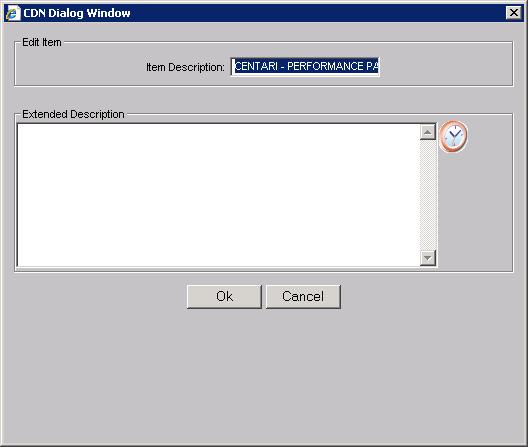
After
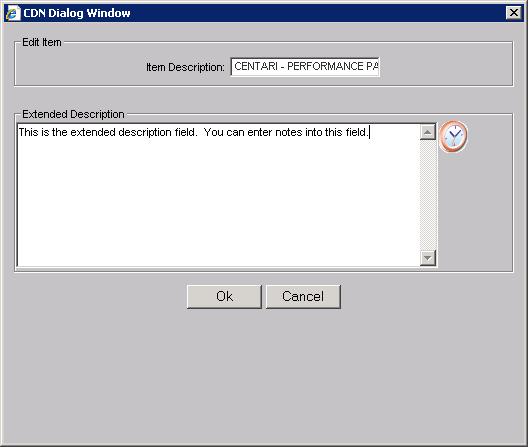
This change is only for this line item on this invoice.
UOM - Unit of Measure
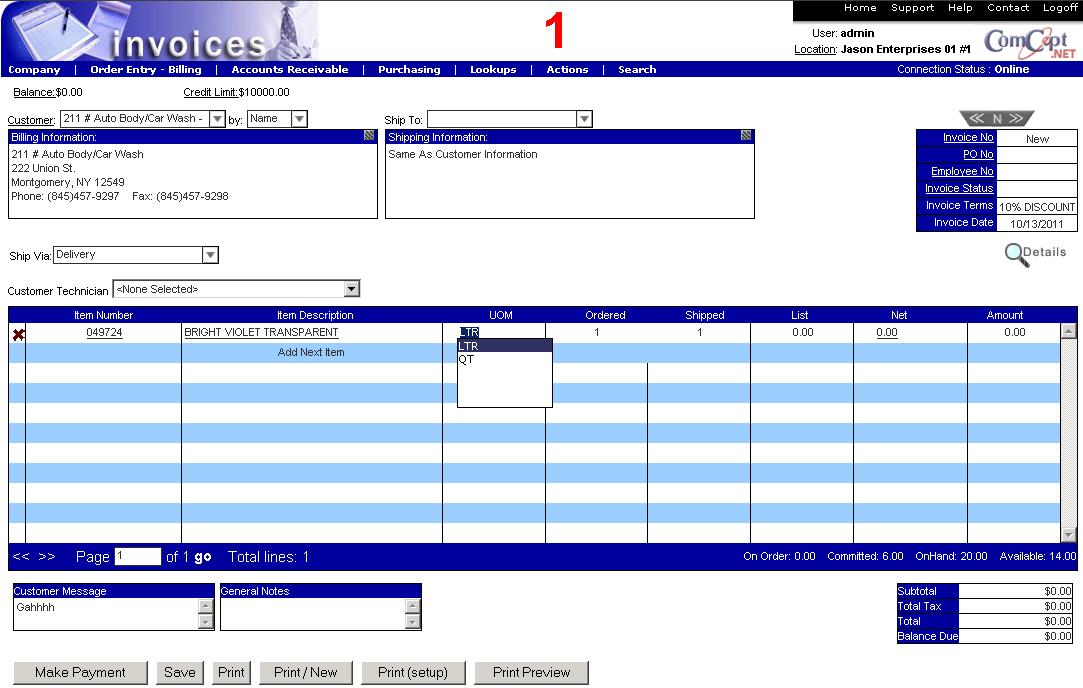
Next is the
UOM field.
If there is more than one selling unit of measure for the item, the drop down box opens automatically. However, the item is immediately priced using the
Default Sales UOM (set up in the
Master Inventory task).
Highlight the desired unit of measure and then press the (Tab) key or use the mouse.
Ordered
Next is the quantity
Ordered field. Enter the quantity ordered by the customer and then press (Tab).
Shipped
Next is the quantity
Shipped field. Enter the quantity shipped to the customer and then press (Tab).
Net
Next is the
Net selling price field. Press (Tab) to accept the net selling price calculated as specified in
Edit Customer Special Pricing and
Pricing Profiles tasks or select the
Net price field with the mouse to open the
Line Item Details window to make adjustments.
Customer:
Trade Discount: The discount percent that will be applied to all lines on the invoice if the
Apply button is selected. The default is maintained in the customer record in the
Trade Discount field.
Item No: The item number entered on the invoice. Display only.
Description: The item description. Display only.
List: The List Price for the Item.
Profile: The selling price as calculated by the
Customer’s Special Pricing or
Pricing Profile data.
Discount: Additional discount off of the
Profile selling price. The desired value can be entered.
Net: The net selling price after additional discount. The desired value can be entered.
Savings: The difference between the
Profile price and the
Net price. The desired value can be entered.
No Disc: Select this box to remove a discount entered and return the
Net price to the original Profile price.
Can B/O: Select this box to cancel back ordered quantities.
Tax: Select this box to charge sales tax on the line item or deselect to not change sales tax.
Subtotal: The running subtotal for the invoice.
Select
Save to record the pricing changes or
Cancel to discard the changes and keep the original pricing.
Miscellaneous Items Billing
There are several
Item Types used to define the way an item is processed. These are assigned to the item when it is setup using the
Master Inventory task. Depending on the Item Type, the item description, net price, or cost may be empty or contain a generic value. Use the methods described above to change these fields as required.